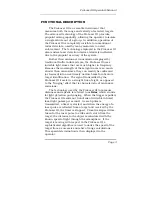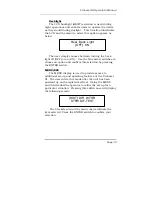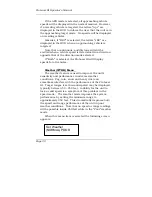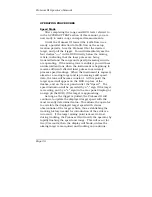
ProLaser III Operator's Manual
Page
11
The amount of error is defined by a trigonometric
relationship known as the cosine. From a judicial
standpoint, the measurement inaccuracy introduced by
the cosine effect is always in favor of the motorist, since it
has the effect of reducing the measured speed.
The greater the angle between the ProLaser III and the
direction of traffic, the greater the cosine error produced.
For small angles, the cosine effect is relatively
insignificant. For examples, at angles of less than 8°, the
cosine error is under 1%, and at angles of less than 14°,
the error is under 3%. As a general guideline, if you select
a location where the distance to the target vehicle is at
least ten times greater than the ProLaser III's
perpendicular distance from the roadway, this
corresponds to an angle of 5.7° or less, and the amount of
cosine error will not exceed 1/2%. For example, setting
up 20 feet off the roadway and measuring targets at a
range of 200 feet or greater, will assure that the cosine
effect produces no more than 1/2% error in the speed
measurement. Again, it is important to remember that
any cosine error introduced always reduces the indicated
speed reading, thus favoring the motorist.
Another factor in selecting a setup location is that you
must have a clear line of sight to the target vehicle during
the entire measurement interval. Intervening objects such
as signposts, utility poles, and tree branches, will prevent
the instrument from gathering sufficient valid
measurement data to display a speed reading. It will also
assist in setup if you select a location where minimum
movement of the ProLaser III is required in order to keep it
aimed on the desired target.












































